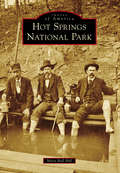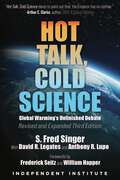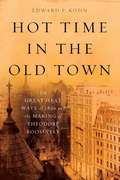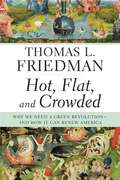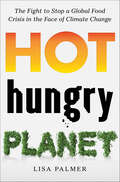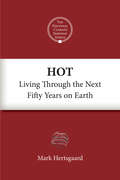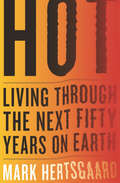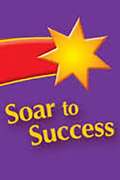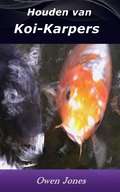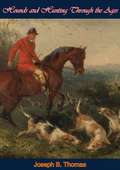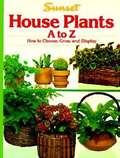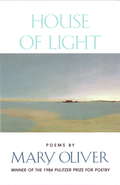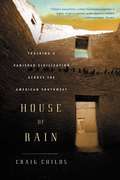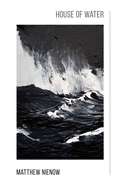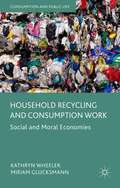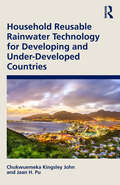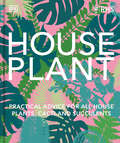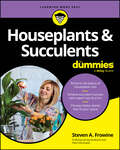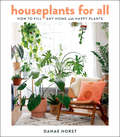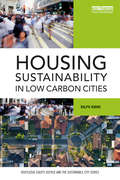- Table View
- List View
Hot Springs National Park
by Mary Bell HillHot Springs was one of the first areas set aside as a federal land reservation in 1832--predating the first national park at Yellowstone by 40 years. In 1921, it was officially designated a national park. Physically the smallest of the 59 US national parks today, Hot Springs measures just larger than 5,500 acres. Its 47 on-site springs produce more than 700,000 gallons of thermal water per day. From early natives who quarried novaculite found in the surrounding hills to famous politicians, performers, and athletes, people have been coming to these springs for thousands of years to partake in the supposed healing powers of the water. Pres. Franklin Roosevelt, boxer Jack Dempsey, and French opera diva Lily Pons are a few of the visitors who made the trek to the "Valley of the Vapors." The history of Hot Springs National Park revolves around peoples' interactions with its thermal water.
Hot Stuff: Hot Springs, Geysers, and More (Fountas & Pinnell Classroom, Guided Reading Grade 6)
by Charlotte RoseNIMAC-sourced textbook
Hot Talk, Cold Science: Global Warming's Unfinished Debate
by S. Fred Singer David R. Legates Anthony R. LupoThe revised and expanded third edition of Hot Talk, Cold Science forms the capstone of the distinguished astrophysicist Dr. S. Fred Singer&’s lucid, yet hard scientific look at climate change. And the book is no less explosive than its predecessors—and certainly never more timely.Singer explores the inaccuracies in historical climate data and the failures of climate models, as well as the impact of solar variability, clouds, ocean currents, and sea levels on global climate—plus factors that could mitigate any human impact on world climate. Singer&’s masterful analysis decisively shows that the pessimistic, and often alarming, global-warming scenarios depicted in the media have no scientific basis. In fact, he finds that many aspects of increased levels of CO2, as well as any modest warming, such as a longer growing seasons for food and a reduced need to use fossil fuels for heating, would have a highly positive impact on the human race. As alarmists clamor to impose draconian government restrictions on entire populations in order to combat "climate change," this book reveals some other startling, stubborn contradictory facts, including: CO2 has not caused temperatures or sea levels to rise beyond historical rates. Severe storms have not increased in frequency or intensity since 1970—neither have heat waves nor droughts. Global "climate change" is not harming coral reefs. Any increases in CO2 concentrations across huge time spans haven't preceded rising global temperatures, they&’ve followed them by about 600 to 800 years—just the opposite of alarmist claims. "Carbon" taxes and other "solutions" to the global warming "crisis" would have severe consequences for economically disadvantaged groups and nations. Alarmist climate scientists have hidden their raw temperature data and deleted emails—then undermined the peer-review system to squelch debate. In sum, despite all the hot talk—and outright duplicity—there is no "climate crisis" resulting from human activities and no such threat on the horizon.
Hot Time in the Old Town: The Great Heat Wave of 1896 and the Making of Theodore Roosevelt
by Edward P. KohnA vivid narrative that captures the birth of the progressive era, Hot Time in the Old Town revives the forgotten disaster that almost destroyed a great American city when one of the worst natural disasters in American history, the 1896 New York heat wave killed almost 1,500 people in ten oppressively hot days.
Hot, Flat, and Crowded: Why We Need a Green Revolution - and How It Can Renew America
by Thomas L. FriedmanFriedman shows how the 2 biggest crises of today (America's loss of focus since 9/11 and the global environment crisis) are linked and how we can restore the world and revive America at the same time
Hot, Hot Mud Pots (Fountas & Pinnell Classroom, Guided Reading)
by Javier TempkinNIMAC-sourced textbook. Beware of the Puddles. Mud pots are puddles of very, very, very hot mud. They look like boiling, muddy soup. They're so hot, they can burn the shoes right off your feet!
Hot, Hungry Planet: The Fight to Stop a Global Food Crisis in the Face of Climate Change
by Lisa PalmerEarth will have more than 9.6 billion people by 2050 according to U.N. predictions. With resources already scarce, how will we feed them all? Journalist Lisa Palmer has traveled the world for years documenting the cutting-edge innovations of people and organizations on the front lines of fighting the food gap. Here, she shares the story of the epic journey to solve the imperfect relationship between two of our planet’s greatest challenges: climate change and global hunger.Hot, Hungry Planet focuses on three key concepts that support food security and resilience in a changing world: social, educational, and agricultural advances; land use and technical actions by farmers; and policy nudges that have the greatest potential for reducing adverse environmental impacts of agriculture while providing more food. Palmer breaks down this difficult subject though seven concise and easily-digestible case studies over the globe and presents the stories of individuals in six key regions—India, sub-Saharan Africa, the United States, Latin America, the Middle East, and Indonesia—painting a hopeful picture of both the world we want to live in and the great leaps it will take to get there.
Hot: Living Through the Next Fifty Years on Earth
by Mark Hertsgaard Eban GoodsteinOn December 7, 2011, Mark Hertsgaard participated in The National Climate Seminar, a series of webinars sponsored by Bard College's Center for Environmental Policy. The online seminars provide a forum for leading scientists, writers, and other experts to talk about critical issues regarding climate change. The series also opens a public conversation, inviting participants to ask questions and contribute their own thoughts. Hertsgaard has spent the last two decades reporting on climate change for media outlets including The New Yorker, NPR, Time, Vanity Fair, and The Nation, where he is the environment correspondent. His lecture focused on political movements and how environmental advocates can provoke change in public attitudes and on Capitol Hill. Hertsgaard sees 2011's Occupy movement as a sign of real hope and discussed what climate activists can learn from Occupy's tactics. This E-ssential is an edited version of Hertsgaard's talk and the subsequent question and answer session. While some material has been cut and some language modified for clarity, the intention was to retain the substance of the original discussion.
Hot: Living Through the Next Fifty Years on Earth (National Climate Seminar Ser. #5)
by Mark HertsgaardA fresh take on climate change by a renowned journalist driven to protect his daughter, your kids, and the next generation who'll inherit the problem For twenty years, Mark Hertsgaard has investigated global warming for outlets including the New Yorker, NPR, Time, Vanity Fair, and The Nation. But the full truth did not hit home until he became a father and, soon thereafter, learned that climate change had already arrived-a century earlier than forecast-with impacts bound to worsen for decades to come. Hertsgaard's daughter Chiara, now five yea rs old, is part of what he has dubbed "Generation Hot"--the two billion young people worldwide who will spend the rest of their lives coping with mounting climate disruption. HOT is a father's cry against climate change, but most of the book focuses on s olutions, offering a deeply reported blueprint for how all of us-as parents, communities, companies and countries-can navigate this unavoidable new era. Combining reporting from across the nation and around the world with personal reflections on his daugh ter's future, Hertsgaard provides "pictures" of what is expected over the next fifty years: Chicago's climate transformed to resemble Houston's; dwindling water supplies and crop yields at home and abroad; the redesign of New York and other cities against mega-storms and sea-level rise. Above all, he shows who is taking wise, creative precautions. For in the end, HOT is a book about how we'll survive.
Hotshots!
by Chris L. DemarestSparks from a train ignite a field baked for days. Then winds whip it into a fast-running blaze. With fire now spreading out of control, the hotshots are called. They're ready to roll. What are hotshots?They are an elite ground fire-fighting corps of men and women highly trained to understand the scientific nature of fire in order to go deep into the heart of a wildfire, beyond the reach of hose lines, to limit the destruction of land and wildlife. As more homes are being built into the natural landscape, the role of the hotshot in fighting fire has become increasingly important. With stunning pictures and an action-packed text, fine artist and volunteer firefighter Chris L. Demarest here captures the spirit of the dedicated hotshots and the real-life drama of the dangerous work they must do every day.
Houden van Koi Karp (Hoe U... #1)
by Owen JonesHouden van Koi Karp De inhoud van dit e-boek over Koi-tuinvijvers en aanverwante onderwerpen is onderverdeeld in achttien hoofdstukken, die je zullen helpen om een site voor je Koi Carp Pond te kiezen, deze het hele jaar door in te stellen en te onderhouden en te zorgen voor je waardevolle vis tijdens de verschillende seizoenen en zelfs in bijzonder ongunstige weersomstandigheden. Het kan zelfs helpen om je in een nieuwe carrière te begeven. Het minste dat het zal doen is u honderden besparen op professioneel advies. Als een toegevoegde bonus, verleen ik u toestemming om de inhoud op uw eigen website of in uw eigen blogs en nieuwsbrief te gebruiken, hoewel het beter is om deze eerst in uw eigen woorden te herschrijven. U kunt het boek ook splitsen en de artikelen doorverkopen. In feite is het enige recht dat u niet hebt, het opnieuw verkopen of weggeven van het boek zoals het aan u is bezorgd. Als u feedback heeft, laat deze dan achter bij het bedrijf waar u dit boek van heeft gekocht of stuur het naar mij op owen@amiabledragon.com Je kunt meer boeken vinden zoals deze waar je deze hebt gekocht
Houghton Mifflin Discovery Works: Earth's Water
by Silver Burdett GinnWhere are sources of fresh water found? Think about where the water you use every day comes from. Is it brought by pipes from a faraway reservoir like the one shown? Does it come from a well drilled deep in the ground? Or does it come from some other source? What things in water can be harmful? Building a model of a water-filtering system will help you investigate how water that is dirty and unsafe is made clean and safe for drinking.
Hounds and Hunting Through the Ages (The\derrydale Press Foxhunters' Library)
by Joseph B. ThomasHounds and Hunting through the Ages remains the definitive volume for the foxhunter of all skill levels. This primer of foxhunting covers all aspects of the sport, from the history and technique of hunting, to the development, selection, breeding and training of hounds.Beautifully illustrated throughout, this edition contains a complete glossary of hunting terms. It also includes a Foreword by Mason Houghland, the author of Gone Away and contributor of numerous stories on foxhunting to national magazines, as well as an Introduction by the Earl of Lonsdale, himself a keen sportsman whose name would later be given to the Lonsdale clothing brand.Authoritative and comprehensive, this great modern classic of the chase remains one of the most famous books of our time on the whole art and sport of Foxhunting.An essential addition to any sporting library.
House Gods: Sustainable Buildings and Renegade Builders
by Jim KristoficOur buildings are making us sick. Our homes, offices, factories, and dormitories are, in some sense, fresh parasites on the sacred Earth, Nahasdzáán. In search of a better way, author Jim Kristofic journeys across the Southwest to apprentice with architects and builders who know how to make buildings that will take care of us. This is where he meets the House Gods who are building to the sun so that we can live on Earth. Forever.In House Gods, Kristofic pursues the techniques of sustainable building and the philosophies of its practitioners. What emerges is a strange and haunting quest through adobe mud and mayhem, encounters with shamans and stray dogs, solar panels, tragedy, and true believers. It is a story about doing something meaningful, and about the kinds of things that grow out of deep pain. One of these things is compassion—from which may come solace. We build our buildings, we make our lives—we are the House Gods.
House Plants
by Sunset Publishing StaffCatalogues common house plants from A to Z and provides tips for proper care.
House Plants for the Purple Thumb
by Maggie BaylisMaggie Baylis provides a how-to book for houseplants.
House of Light
by Mary OliverThis collection of poems by Mary Oliver once again invites the reader to step across the threshold of ordinary life into a world of natural and spiritual luminosity.Tell me, what is it you plan to dowith your one wild and precious life?—Mary Oliver, "The Summer Day" (one of the poems in this volume)Winner of a 1991 Christopher AwardWinner of the 1991 Boston Globe Lawrence L. Winship Book AwardThis book was published with two different covers. Customers will be shipped the book with one of the available covers.
House of Rain: Tracking a Vanished Civilization Across the American Southwest
by Craig ChildsThe greatest "unsolved mystery" of the American Southwest is the fate of the Anasazi, the native peoples who in the eleventh century converged on Chaco Canyon (in today's southwestern New Mexico) and built what has been called the Las Vegas of its day, a flourishing cultural center that attracted pilgrims from far and wide, a vital crossroads of the prehistoric world. The Anasazis' accomplishments - in agriculture, in art, in commerce, in architecture, and in engineering - were astounding, rivaling those of the Mayans in distant Central America. By the thirteenth century, however, the Anasazi were gone from Chaco. Vanished. What was it that brought about the rapid collapse of their civilization? Was it drought? pestilence? war? forced migration? mass murder or suicide? For many years conflicting theories have abounded. Craig Childs draws on the latest scholarly research, as well as on a lifetime of adventure and exploration in the most forbidding landscapes of the American Southwest, to shed new light on this compelling mystery.
House of Water
by Matthew NienowThis debut highlights fatherhood at its peak as it juggles the uncertainty and deeper meaning of everyday life. The hesitant, yet curious voice of the poems are deeply entrenched in the familial, yet also refreshingly open about the crush one feels when their ideals crash down. How does one build a life, only to be redirected and start anew?
Household Recycling and Consumption Work: Social and Moral Economies (Consumption and Public Life)
by Kathryn Wheeler Miriam GlucksmannConsumers are not usually incorporated into the sociological concept of 'division of labour', but using the case of household recycling, this book shows why this foundational concept needs to be revised.
Household Reusable Rainwater Technology for Developing and Under-Developed Countries
by Jaan H. Pu Chukwuemeka Kingsley JohnHousehold Reusable Rainwater Technology for Developing and Under-Developed Countries provides insight into household techniques for collecting and treating harvested rainwater safely for both potable and nonpotable uses, as well as practices to improve its quality, with numerous realworld case studies and data. It gives a comprehensive, holistic account on the household scale for both developing and under-developed countries. Improvement mechanisms such as the impacts of first flush, household water treatment techniques, and sedimentation in the harvested water are described in depth together with the advantages and disadvantages of their common practices in developing and under-developed societies. Also discussed is a comprehensive survey illustrating the impact of rainwater sources on the daily life of a carefully selected community from the perspective of its residents. The book is ideal for students, researchers, academics, water policy providers, and bodies worldwide such as WHO and DFID.
Houseplant: Practical Advice for All Houseplants, Cacti, and Succulents
by DKDiscover over 330 houseplant varieties and make the most of them with care advice, design inspiration, and step-by-step projects.Turn your living space into an indoor oasis with the RHS's definitive guide to more than 330 houseplant varieties.Take your house plant collection to the next level with Houseplant. Discover the best varieties to suit your home from more than 330 profiles on every kind of houseplant you can imagine, from succulents and cacti to orchids, bromeliads, and even carnivorous plants.Complete with essential care advice to keep your plants alive and thriving, propagation tips to help you grow your collection, and 24 step-by-step projects designed to make the most of your greenery, Houseplant has everything you need to create, cultivate, and care for your indoor garden.
Houseplants & Succulents For Dummies
by Steven A. FrowineBecome the best plant parent you can be Houseplant hysteria is here to stay. For new and seasoned plant owners alike, Houseplants & Succulents For Dummies is the ideal resource on plant care, growing cycles, unique plant varieties, and all the essentials you need to know about your rooted friends. Ensure that your sprouts grow and thrive, with tons of tips and answers to all your questions. Are they getting enough light? Are you overwatering? Why are the leaves turning yellow? This fun Dummies guide teaches you to find the right plants for your personal plant care style, identify common varieties, choose the right potting soil, and pick the perfect little nook for your leaf baby. You’ll also learn how to rescue your plants when pests and diseases strike, and even how to use plants as part of a stylish home décor approach. Get growing! Learn about the different types of plants and choose the ones that will work for you Figure out how to keep your plants happy—and what to do about it if they’re not Determine how often to water plants, what type of soil they need, and how much light Improve your mental and respiratory health by filling your home with plantsGrab this handy book if you’re new to the houseplant craze and want a user-friendly, comprehensive guide on plant care. Intermediate and advanced plant parents will also love this handy reference with info on the latest plant trends and new varieties.
Houseplants for All: How to Fill Any Home with Happy Plants
by Danae HorstTurn over a new leaf with Houseplants for All, and actually keep all your plant babies happy and healthy. Use the plant profile quiz to easily find your perfect match instead of picking up whatever catches your eye at the store and hoping that it'll survive your home and lifestyle. Whether you're always busy and can't remember to water, get unobstructed natural light all day, or live in the shadow of a skyscraper, a tropical oasis or arid winter-land, there is a plant that'll thrive with you.After finding the right plants for your home, this book will help you to master plant care, complete with projects and tips for which containers work best, the best plants for small places, how to live together with pets and plants, and solutions to problems like pests, root rot, and lack of nutrients. Whether you're an experienced plant parent or have never owned anything other than a fake ficus, this book is the perfect guide for happy plants in your home.
Housing Sustainability in Low Carbon Cities (Routledge Equity, Justice and the Sustainable City series)
by Ralph HorneHousing affordability, urban development and climate change responses are great challenges that are intertwined, yet the conceptual and policy links between them remain under-developed. Housing Sustainability in Low Carbon Cities addresses this gap by developing an interdisciplinary approach to urban decarbonisation, drawing upon more established, yet quite distinctive, fields of built environment policy and design, housing, and studies of social and economic change. Through this approach, policy and practices of housing affordability, equity, energy efficiency, resilience and renewables are critiqued and alternatives are presented. Drawing upon international case studies, this book provides a unique contribution to interdisciplinary urban and housing studies, discourses and practices in an era of climate change. This book is recommended reading on higher level undergraduate and taught postgraduate courses in architecture, urban studies, planning, built environment, geography and urban studies. It will also be directly valuable to housing and urban policy makers and sustainability practitioners.
